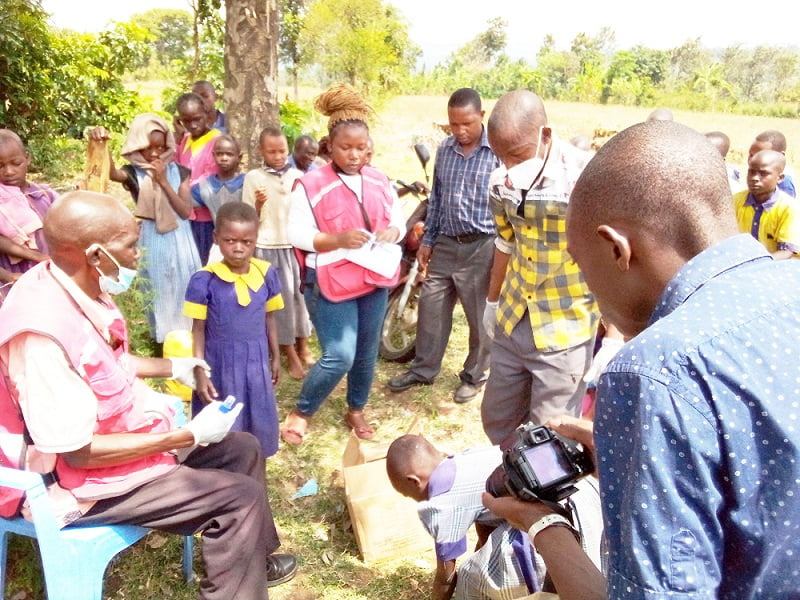As millions of Kenyans grapple with food insecurity, high cost of living and harsh economic times, thousands of school children are also suffering from jigger infestation.
A study conducted by Kenya Medical Research Institute (KEMRI) between May 2021 and June 2022 found that 17,423 children aged between 8 and 14 years in nine counties across the country are infested more with jiggers.
The nine counties are Murang’a, Kericho, Makueni, Nakuru, Samburu, Kilifi, Kajiado, Taita Taveta and Turkana. Others are Kajiado, Kilifi, Muranga, Nakuru and Samburu counties.
In the report, it was established that jiggers are more prevalent among boys compared to girls.
The study disclosed that affected children expressed higher levels of shame, anger, difficulty concentrating in school, sleeping and walking.
To curb the infestation, the study recommended interventions such as economic support, daily use of soap for foot washing.
“This study has confirmed that tungiasis has a considerable impact on children’s lives and academic achievement. Pupils with tungiasis also had lower scores in school exams than uninfected pupils even when adjusted for age, sex, disability, socio-economic status and absenteeism,” the report said.
Tungiasis, commonly known as jiggers, is caused by female sand fleas, which burrow into the skin and lay eggs.
The relationship between factors influencing jigger infestation in relation to school going children has not been given much attention.
Jigger infestation is a public health problem whose adverse effects include auto-amputation of the limbs which creates open sores for secondary infection, anaemia, tetanus and mortality especially in poor communities in endemic areas.
The many popular names for the flea include funza, ndutu, dudu, jigger, chique, chigoe, chica, nigua, bicho de pe’, puce-chique and tu which indicates that Tungiasis has become a common disease in many parts of the tropics.
Background
Originally, the tunga penetrans was restricted to Latin America, South America and the Caribbean between the 18th and 19th centuries however, the parasite is said to have been stowed away through ships carrying sand from Brazil to Angola in West Africa. From Angola, the parasite spread to other parts of sub-Saharan Africa.
Worldwide, 88 countries are jigger infested, with most of these countries in Africa including Nigeria, Angola, Cameroon, Tanzania, Uganda and Kenya.
Traditional beliefs and Culture
Traditional beliefs and cultures among members of affected communities are still a major set-back in the fight against jigger infestation.
Sharing sleeping quarters with domestic animals can be a perfect avenue for spreading the fleas. When human beings live in close contact with infected animals, the risk and the intensity of jigger infestation is high.
Some communities still believe that jigger infestation is as a result of curses. For instance an affected community in Tanzania believes that the jigger problem started in the 20th century when members of Kibondo District started interacting with foreign Indians, while others believe it is caused by witchcraft.
The Maasais in Kioge Village Tanzania believe that jiggers are a bad omen, while victims of jigger infestation in rural Uganda believe they are bewitched and that is why they suffer from jiggers.
Under such circumstances, many of those affected end up seeking treatment from traditional healers instead of seeking conventional health care and treatment.
Transmission
Jigger transmission from one person to another is not possible but it mainly occurs around unclean environments especially in sandy and dusty environments where it thrives best.
The young female jigger is agile, jumpy and crawls on the ground until it locates a warm-blooded host. It is a nuisance once it penetrates the skin as it causes irritation and severe sores that becomes entry points for secondary infections.
Monkeys, jaguars, elephants, pigs, dogs, cats, cattle, sheep and rats are popular carriers of jiggers.
The jigger then releases proteolytic enzymes during penetration and growth, leading to an inflammatory response of the skin manifesting as erythema, oedemas, pain and itching.
The immune response of the host might contributes to the intense inflammation observed soon after penetration. The flea uses hindquarter for breathing, defecating, and expulsing eggs.
The mature eggs are extruded onto the ground, where the larvae feed, pupate and metamorphose into the adult flea. The organism undergoes a peculiar hypertrophy in 10 days, expels several hundreds of eggs for a period of less than 3 weeks, and eventually dies.
Various studies have shown that the development of eggs from adult fleas can take place indoors and outdoors.
In non-vaccinated individuals, Tungiasis has been associated to be one of the predisposing factors to lethal tetanus secondary infection and also may contribute to transmission of blood borne pathogens such as Hepatitis B Virus (HBV) and HIV.
This normally occurs when non-sterilized instruments are used to remove the embedded sand flea are shared within the household members. Death from Tungiasis related complications have been reported in Brazil, Tanzania, Uganda and Kenya.
Public Health researchers point out that hygiene status in a household determines the health conditions of the occupants, home structures and it is therefore critical to ensure a pleasant environment in households.
Tungiasis is considered to be a disease of the very poor and improvement in housing hygiene and sanitation practices may provide effective approach, not only to control Tungiasis, but also other Epidermal Parasitic Skin Diseases (EPSD) associated with poverty.
By Ben Oroko
Get more stories from our website: Education News
You can also follow our social media pages on Twitter: Education News KE and Facebook: Education News Newspaper for timely updates






